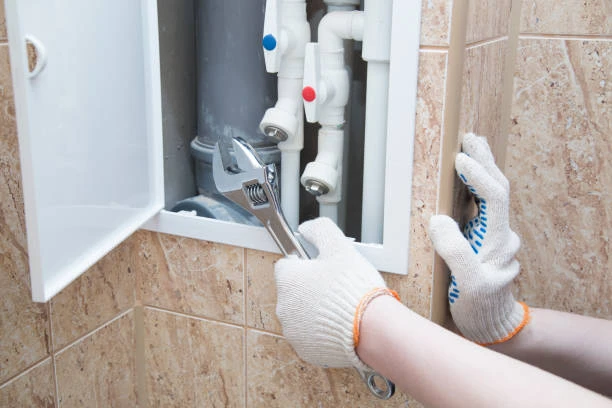PPR pipes fitting have gained popularity in the plumbing and construction industry due to their versatility and durability. They are made from a thermoplastic polymer that is lightweight, resistant to corrosion, and ideal for a variety of applications. In this article, we will explore the main uses of PPR pipes fitting, their benefits, and why they are becoming the go-to solution for many plumbing and piping needs.
1. Introduction to PPR Pipe Fittings
Before diving into their applications, let’s understand what PPR pipes fitting are. These fittings connect segments of PPR pipes, ensuring a secure and leak-proof connection. They come in various shapes and sizes, including elbows, tees, reducers, and couplings. Their ability to withstand high temperatures and pressures makes them suitable for a wide range of plumbing tasks.
2. Common Applications of PPR Pipe Fittings
2.1. Residential Plumbing
One of the primary uses of PPR pipe fitting is in residential plumbing systems. They are widely employed in both hot and cold water supply lines. Homeowners prefer PPR fittings for their:
- Durability: PPR fittings can last for decades without rusting or corroding.
- Cost-effectiveness: They are generally more affordable than metal alternatives and require less maintenance.
2.2. Commercial Buildings
In commercial settings, PPR pipe fittings are used extensively for:
- HVAC Systems: These fittings help in the installation of heating, ventilation, and air conditioning systems, efficiently transporting both hot and cold fluids.
- Firefighting Systems: PPR pipes and fittings are becoming popular for fire protection systems due to their resistance to chemicals and fire.
2.3. Industrial Applications
PPR pipe fittings are increasingly utilized in various industrial applications, such as:
- Chemical Transportation: Their resistance to a wide range of chemicals makes them ideal for transporting aggressive fluids in chemical processing plants.
- Food and Beverage Industry: PPR fittings are safe for use in food processing applications since they do not leach harmful substances.
2.4. Agricultural Irrigation
In agriculture, PPR pipe fittings are commonly used for irrigation systems. Their lightweight nature and resistance to corrosion allow them to withstand harsh environmental conditions, making them perfect for:
- Drip Irrigation Systems: PPR fittings help in efficiently delivering water to crops, reducing water wastage.
- Sprinkler Systems: They are also used in sprinkler systems for even water distribution across agricultural fields.
3. Advantages of Using PPR Pipe Fitting
3.1. Corrosion Resistance
PPR pipe fittings are not susceptible to corrosion, which can be a significant problem for metal pipes. This characteristic extends the lifespan of the fittings and the entire plumbing system.
3.2. Lightweight
Being lightweight, PPR fittings are easy to handle and install. This feature reduces labor costs during installation, making it an economical choice for many projects.
3.3. Thermal Resistance
PPR fittings can withstand high temperatures (up to 95°C or 203°F) without losing their structural integrity, making them suitable for hot water applications.
3.4. Flexibility in Design
These fittings come in various shapes and sizes, allowing for flexible design options in plumbing and piping layouts. Whether you need a straight connection or a complex branching system, there’s a PPR fitting available for your needs.
4. Installation and Maintenance
4.1. Installation Techniques
Installing PPR pipe fitting is relatively straightforward. They can be joined through a process called fusion welding, where the pipe and fitting ends are heated and then joined together to create a seamless connection. This technique results in a strong and leak-proof joint.

4.2. Low Maintenance
Once installed, PPR fittings require minimal maintenance. They do not rust or corrode, and their smooth interior surface prevents the buildup of deposits, ensuring consistent water flow.
5. Environmental Considerations
With increasing awareness of environmental issues, PPR fittings stand out as a sustainable option. They are recyclable and produced without harmful substances, making them an eco-friendly choice for modern plumbing systems.
6. Conclusion
PPR pipe fitting have carved out a significant niche in the plumbing and construction industries due to their versatility and reliability. Whether for residential plumbing, commercial buildings, industrial applications, or agricultural irrigation, their benefits are clear. As we continue to move towards sustainable and efficient building practices, PPR fittings are likely to play an even more significant role in the future of piping systems.
FAQs
- What are PPR pipe fittings made of?
PPR pipe fittings are made from polypropylene random copolymer, a durable and corrosion-resistant thermoplastic material. - Can PPR fittings be used for hot water applications?
Yes, PPR fittings can handle temperatures up to 95°C (203°F), making them suitable for both hot and cold water systems. - How do you install PPR pipe fitting?
PPR fittings are typically installed using fusion welding, where the ends of the pipe and fitting are heated and fused together to create a strong joint. - Are PPR fittings safe for drinking water?
Yes, PPR fittings are non-toxic and do not leach harmful chemicals, making them safe for potable water systems. - What is the lifespan of PPR pipe fittings?
With proper installation and maintenance, PPR pipe fittings can last for over 50 years, making them a long-term investment for plumbing systems.